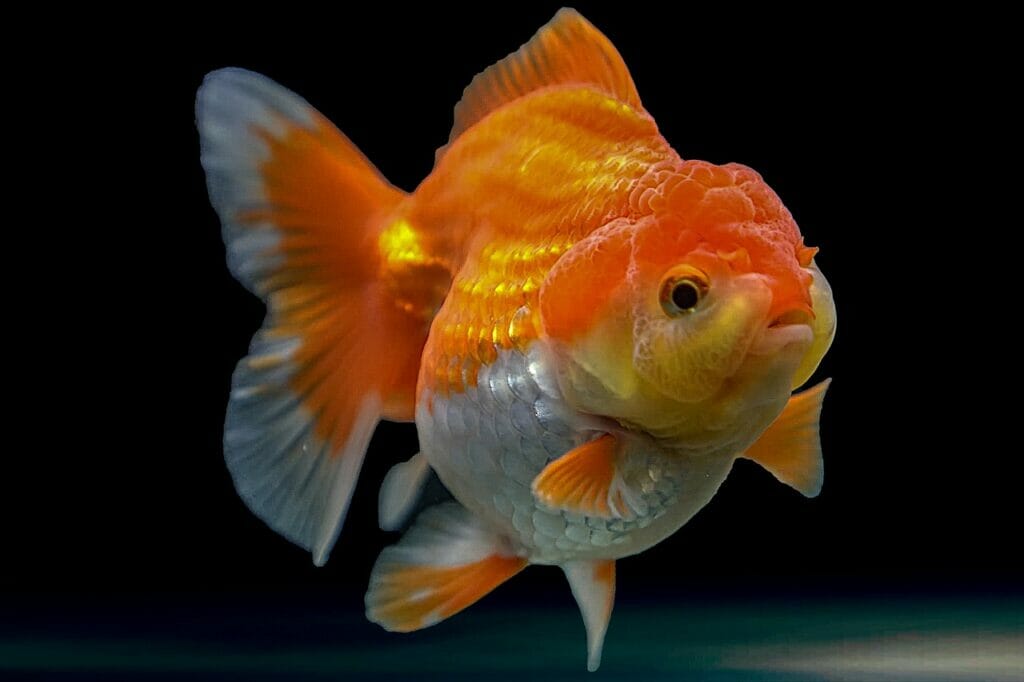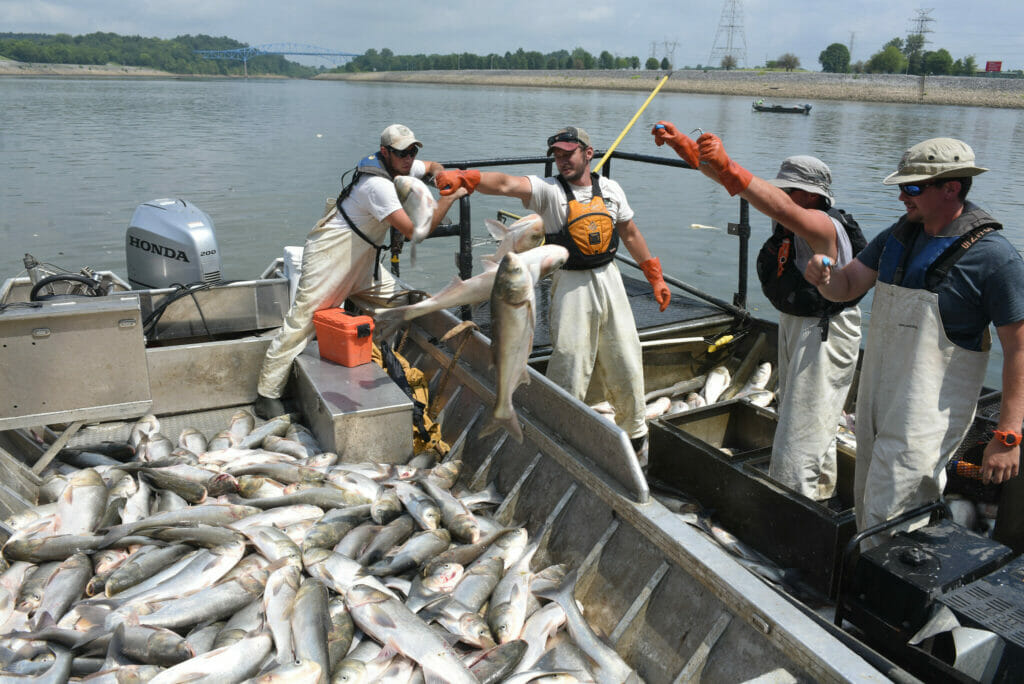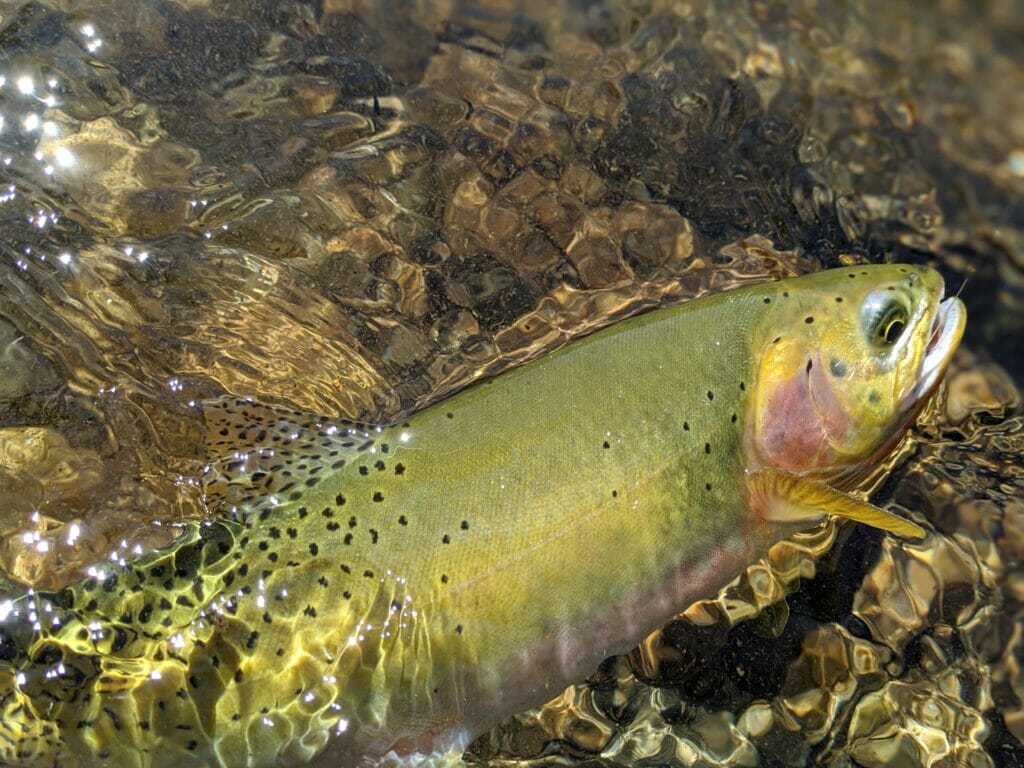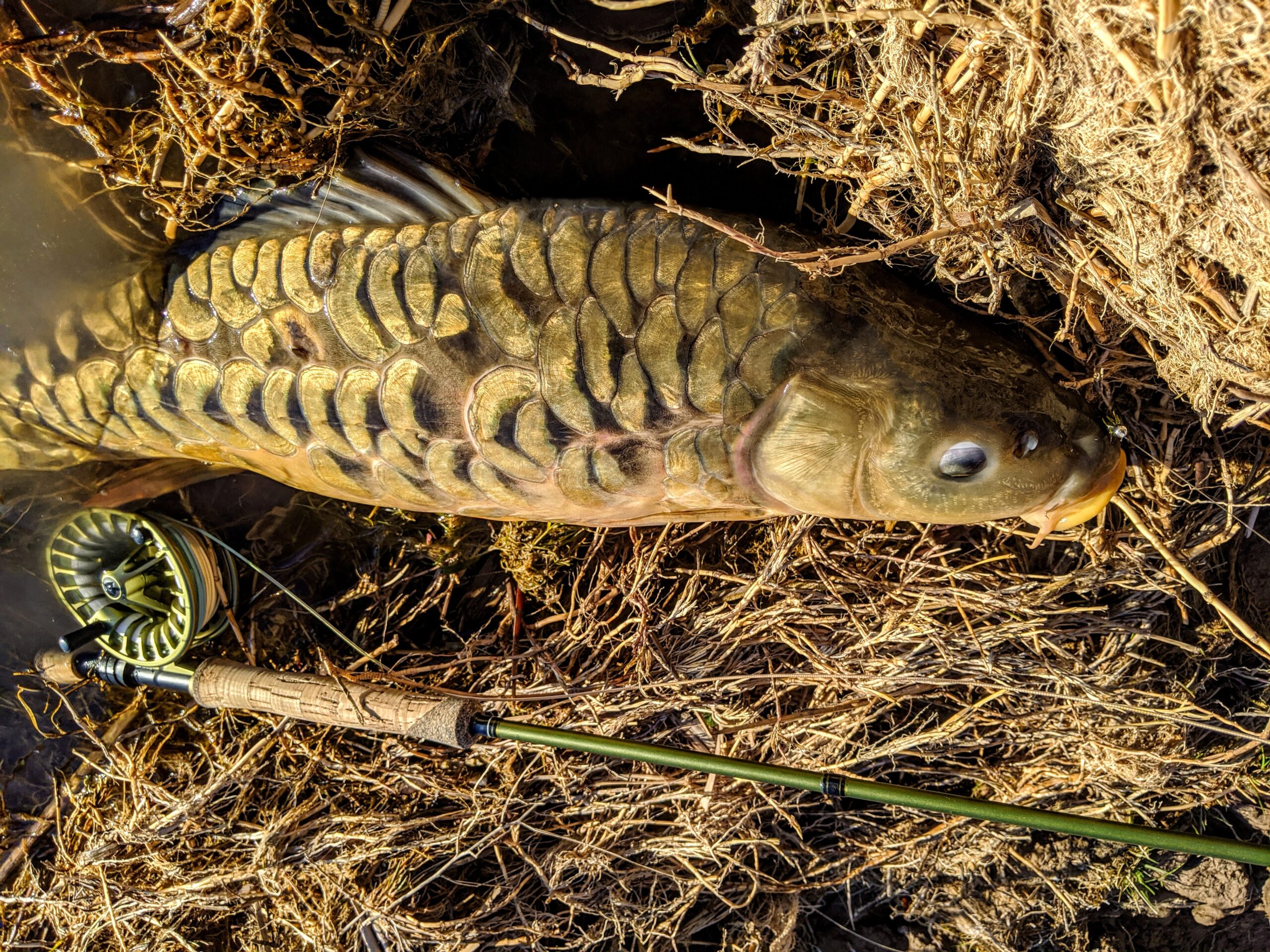Growing up in the Denver suburbs, one of my favorite childhood haunts was a public park a short bike ride from home. It sported the sketchy jungle gym with the sharp, rusty edges, the little spring loaded ridable critters that, with enough momentum, could send a small child into orbit, and a small lake that absolutely burgeoned with virtually domestic carp.
The carp were so brazen that they’d compete with the ducks for pieces of bread tossed into the water by people enjoying warm, summer days along the manicured lake. And every once in a while, the carp were joined by the odd goldfish that ended up in the lake, likely the result of an illegal introduction from a family that decided that keeping the bowl clean was more trouble than it was worth.
I fished the lake voraciously as a kid. I’d hop on my banana-seat bike, stretch my white fiberglass fishing rod across the handlebars and ride 10 minutes to the lake. Sinking balls of dough to the mucky bottom, I caught my share of rangy carp and, once in a while, I’d reel in a goldfish.
Environmental issues aside (and as a kid, I only knew that the goldfish were probably once pets and not the pests they really were), catching a goldfish was a pretty big deal. I’d often bring the fish home in a plastic trash bag and then dump them alive into a big washtub my mom kept in the back yard. I got in big trouble once when she caught me filling up the upstairs bathtub for three big carp and a foot-long goldfish.

Magically, the fish never stuck around very long. My dad would tell me that the raccoons got them, but I suspect he would simply take the fish and bury them in the garden or walk them across the street to the little ditch that ran down the parkway where we lived.
I was reminded of the goldfish I used to catch when I heard about Joe Selover of North Syracuse, N.Y., who caught a fat goldie from Onondaga Lake on a fly recently. The story made USA’s Today’s For the Win page, and made me grin a little. No, it’s not great news to see goldfish turning up in places like Onondaga Lake, but it’s also not terribly surprising. People have been turning pets loose in the woods and waters of North America since Europeans first arrived. From horses that were introduced by the Conquistadors and ably domesticated by Native Americans to hogs and burros and Eurasian collared doves, the continent is overrun by invasive species, some of which are terribly destructive.
Our waterways are no different, of course, and goldfish are likely among the least of our worries. In Florida recently, a giant arapaima, a South American behemoth of a fish, washed up dead in the Caloosahatchee River in the southwest corner of the state. In the canals of Miami, fly anglers can now target introduced peacock bass, tilapia and aquarium fish like oscars and gobies.

One of the most pressing invasive fish battles is taking shape in the southern Great Lakes region, where TU and our conservation partners are working to keep non-native Asian silver carp from reaching Lake Michigan.
Here in Idaho, I’ve rediscovered my carpy angling roots — no longer do I chase them with doughballs in mucky urban ponds, but I go after big, burly common and mirror carp in the little backwater sloughs of the Snake River with saltwater fly gear. Carp don’t belong there. Neither do the smallmouth bass that seem to have a more devoted following among the angling community.
And, of course, let’s not forget that every brown trout outside of Europe or western Asia is an invasive fish, regardless of how prized they are by anglers across the globe.
The native species of this continent — particularly the fishy ones, like brook trout in Appalachia or our prized cutthroats here in the West — should be revered for displaying enough tenacity to cling to existence in places we haven’t managed to screw up yet. We’ve been hell on habitat, and we’ve tried to make things “better” by bringing in gentrified fish species, either as sources of food or as playthings in places where we’ve pushed native species to the brink or removed them altogether.
Let’s not forget that every brown trout outside of Europe or western Asia is an invasive fish, regardless of how prized they are by anglers across the globe.
Chasing the weird and unusual on the fly has become something of a cult pursuit as anglers work to check more and more species off their life lists. I’m guilty myself — my spring and early summer carp addiction is a little odd to most. But we’ll never get rid of them. Like it or not, they’ve become a resource, as have most invasive fish that anglers chase across the country.
The challenge now is, where possible and appropriate, restoring native fish and working to protect those that still swim exactly where they’re supposed to. Sadly, we’re not making anymore habitat for native brookies or cutthroats, which makes these fish all the more special.

So chase those goldfish on the fly. Crawl the canals around Little Havana for South American trophies. Use these introduced resources to get outside and get on the water and enjoy fishing.
Just remember that the real trophies are still out there, and they will be so long as we keep their habitat intact and stop crowding them out with fish that don’t belong there.



